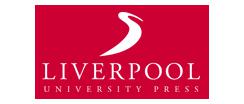- View more resources from this publisher
 Nuffield Foundation
Nuffield Foundation - View more resources from this publisher
 Liverpool University Press
Liverpool University Press
SPACE Project Research Report: Processes of Life
The Science Processes and Concepts Exploration (SPACE) project research report on Processes of Life was published in 1992 by Liverpool University Press. The SPACE research was conducted at two centres - the University of Liverpool and King’s College, London. Each centre took responsibility for research in particular concepts and for producing the report of the work. In the case of Processes of Life, one of the later reports to be published, the research was conducted from King’s College.
The research took place between September 1989 and January 1990. By 1989 the first edition of the National Curriculum for England and Wales had been published. This provided an externally created list of ideas relating to understanding of the area of interest which was taken as defining the area of the research. These ideas related to: the understanding of the concept of ‘living thing’; what is needed to maintain good health in living things; knowledge of parts of the human body and the processes performed by components of the body; and knowledge of plants and their parts. In addition to exploring the extent to which students might develop such knowledge and ideas from their experiences, the research aimed to address questions about: How disparate are the ideas about the processes of life held by many children? What development is observable in children across the primary age range? What is the effect of intervention on the development of children’s ideas about the processes of life?
A pilot phase posed suitable questions and activities for eliciting students' ideas about the processes of life. Data was then collected on students' ideas using the selected activities. This information gave a broad picture of the level of students' knowledge and understanding in this domain. The results are reported for infants (age 5 to 7), lower junior (age 7 to 9) and upper junior students (age 9 to 11).
Intervention activities were devised in response to the students' initial ideas, taking into accounts that knowledge and ideas in relation to processes of life cannot be developed through empirical investigations such as can be used in physical science. The activities were described as sorting, discussion, modelling/making activities and investigations. After a period of about 6 to 8 weeks, the intervention phase was followed by further interviews so that pre- and post-intervention ideas could be compared.
The report provides a large number of examples of students' ideas, both pre-and post-intervention. As well as the qualitative data, the results were analysed by frequency of response using network analysis for specific ideas. Also reported are the differences between the age groups and in their response to the intervention. The greatest changes in many cases were found in the infants (age 5 to 7). Appendices provide full details of the activities, interview schedules, materials used in the activities and the classroom intervention strategies.
Show health and safety information
Please be aware that resources have been published on the website in the form that they were originally supplied. This means that procedures reflect general practice and standards applicable at the time resources were produced and cannot be assumed to be acceptable today. Website users are fully responsible for ensuring that any activity, including practical work, which they carry out is in accordance with current regulations related to health and safety and that an appropriate risk assessment has been carried out.
Downloads
-
Processes of life 17.13 MB




